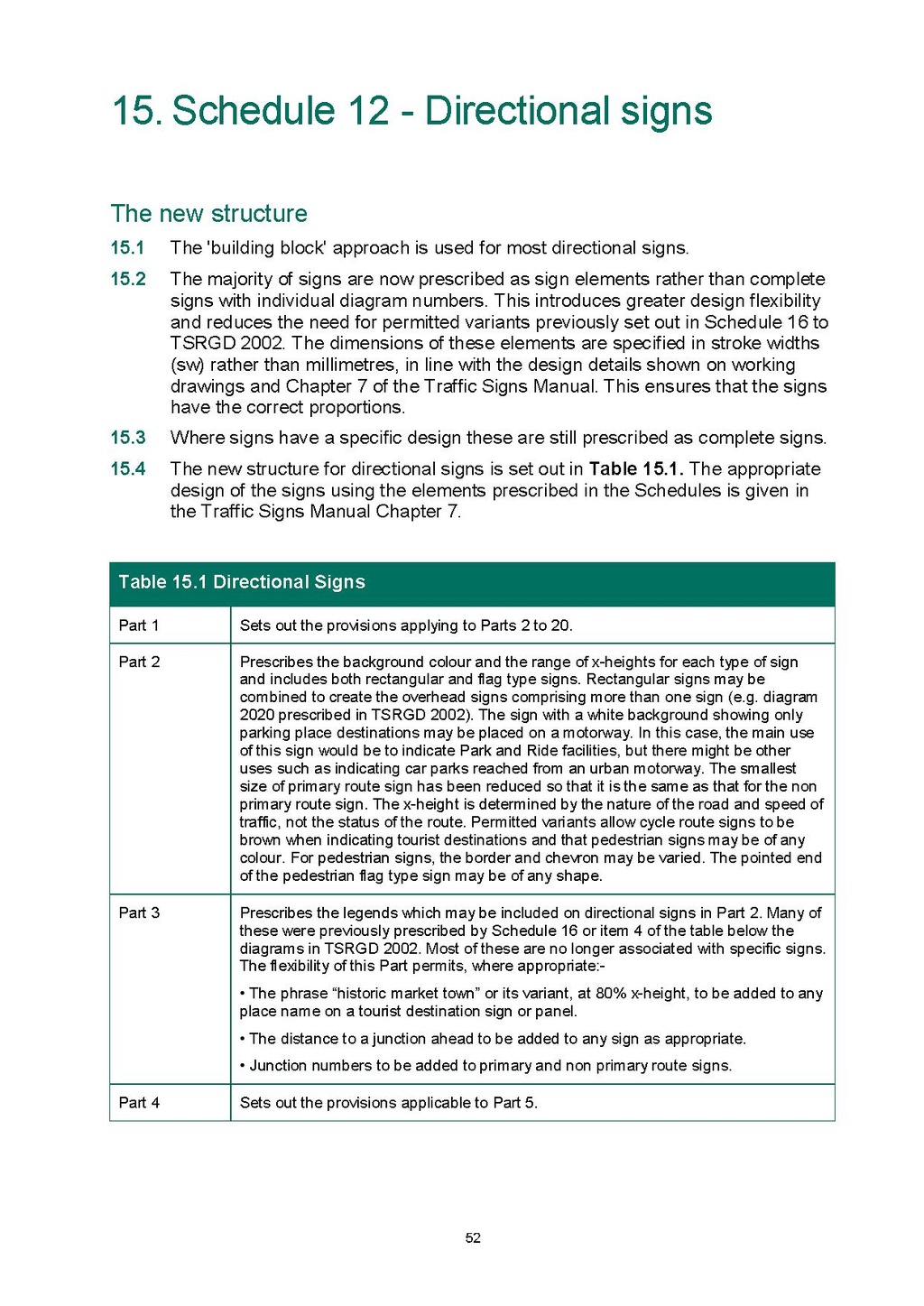This page has been validated.
15. Schedule 12 - Directional signs
The new structure
15.1
The 'building block' approach is used for most directional signs.
15.2
The majority of signs are now prescribed as sign elements rather than complete signs with individual diagram numbers. This introduces greater design flexibility and reduces the need for permitted variants previously set out in Schedule 16 to TSRGD 2002. The dimensions of these elements are specified in stroke widths (sw) rather than millimetres, in line with the design details shown on working drawings and Chapter 7 of the Traffic Signs Manual. This ensures that the signs have the correct proportions.
15.3
Where signs have a specific design these are still prescribed as complete signs.
15.4
The new structure for directional signs is set out in Table 15.1. The appropriate design of the signs using the elements prescribed in the Schedules is given in the Traffic Signs Manual Chapter 7.
| Part 1 | Sets out the provisions applying to Parts 2 to 20. |
| Part 2 | Prescribes the background colour and the range of x-heights for each type of sign and includes both rectangular and flag type signs. Rectangular signs may be combined to create the overhead signs comprising more than one sign (e.g. diagram 2020 prescribed in TSRGD 2002). The sign with a white background showing only parking place destinations may be placed on a motorway. In this case, the main use of this sign would be to indicate Park and Ride facilities, but there might be other uses such as indicating car parks reached from an urban motorway. The smallest size of primary route sign has been reduced so that it is the same as that for the non primary route sign. The x-height is determined by the nature of the road and speed of traffic, not the status of the route. Permitted variants allow cycle route signs to be brown when indicating tourist destinations and that pedestrian signs may be of any colour. For pedestrian signs, the border and chevron may be varied. The pointed end of the pedestrian flag type sign may be of any shape. |
| Part 3 | Prescribes the legends which may be included on directional signs in Part 2. Many of these were previously prescribed by Schedule 16 or item 4 of the table below the diagrams in TSRGD 2002. Most of these are no longer associated with specific signs. The flexibility of this Part permits, where appropriate:
|
| Part 4 | Sets out the provisions applicable to Part 5. |
52
